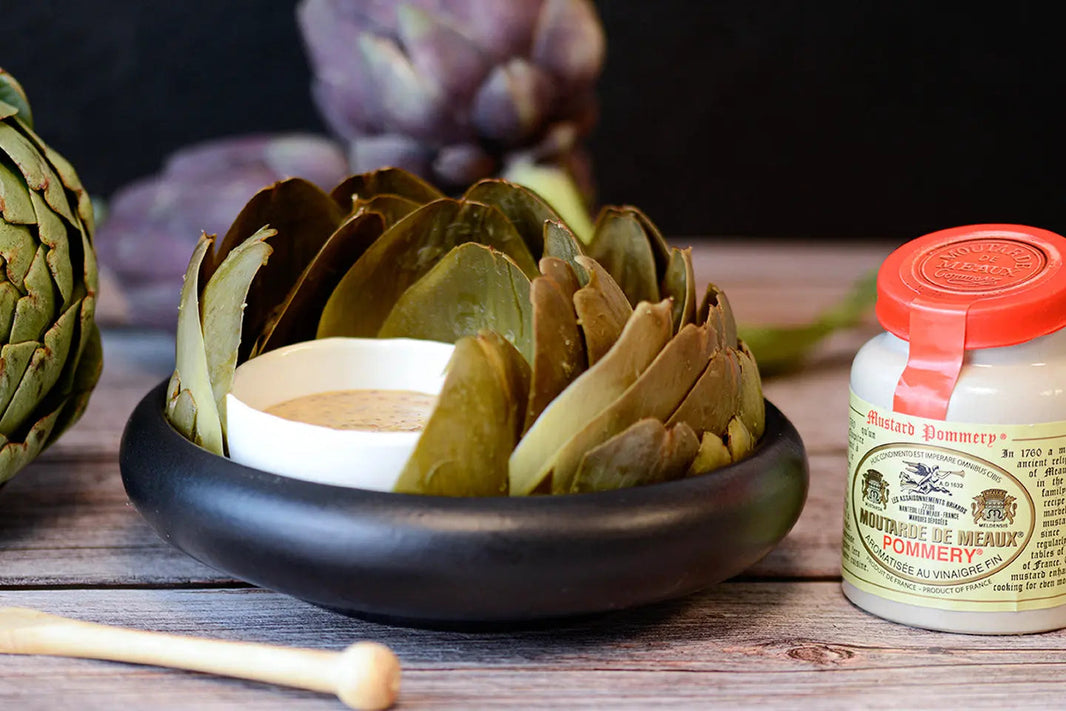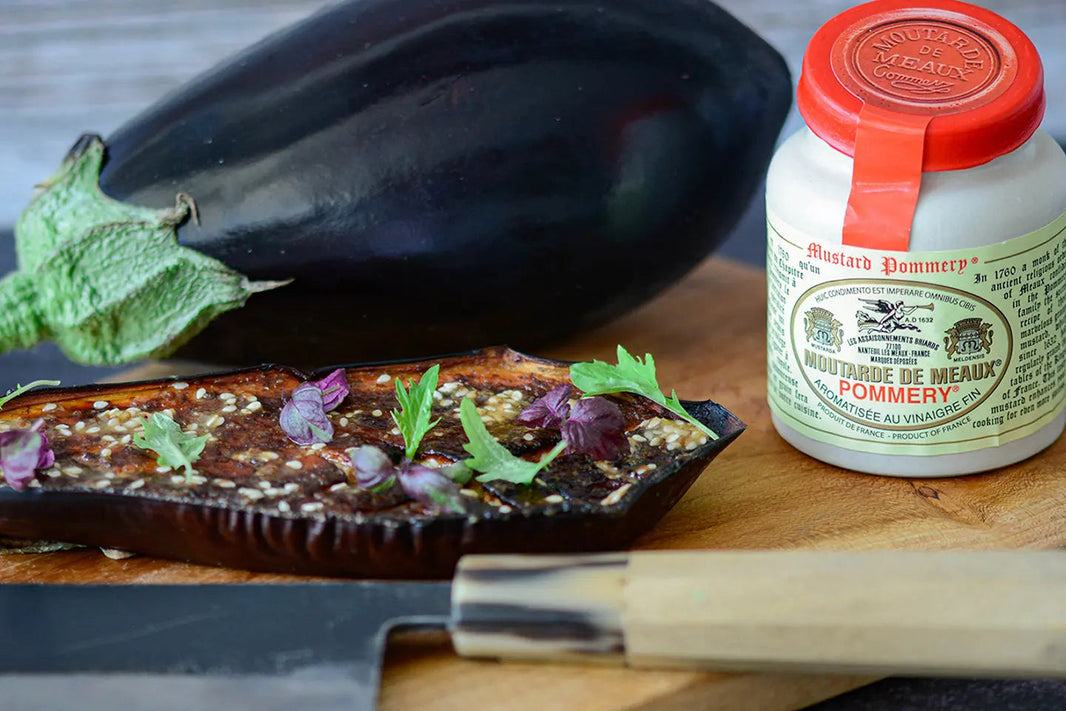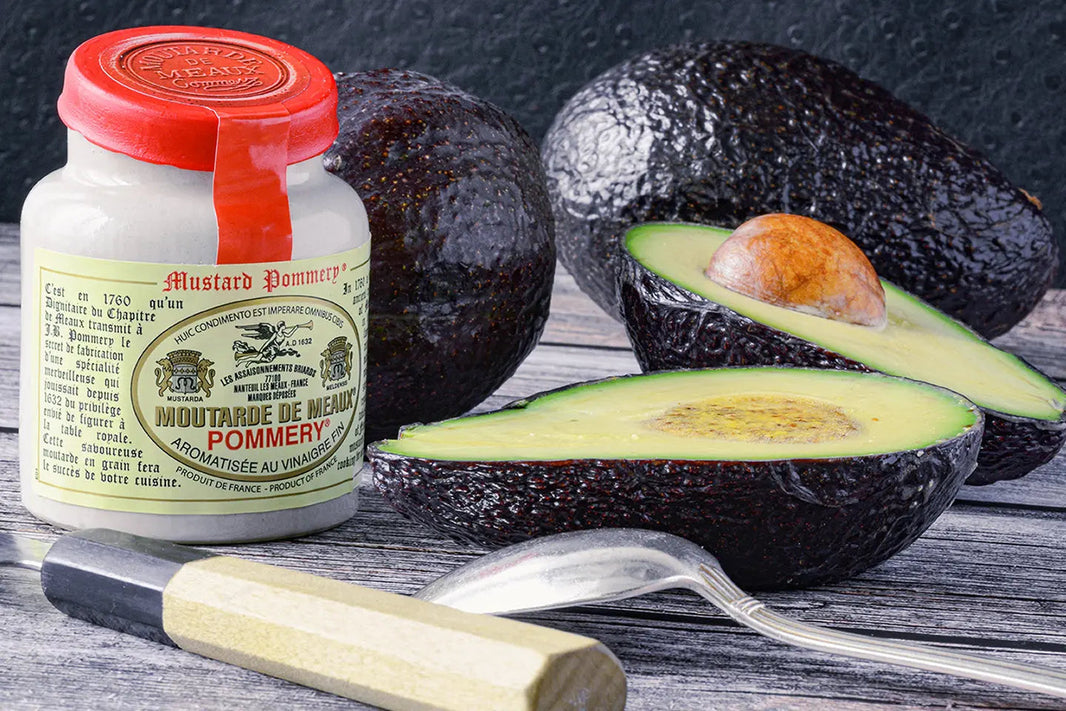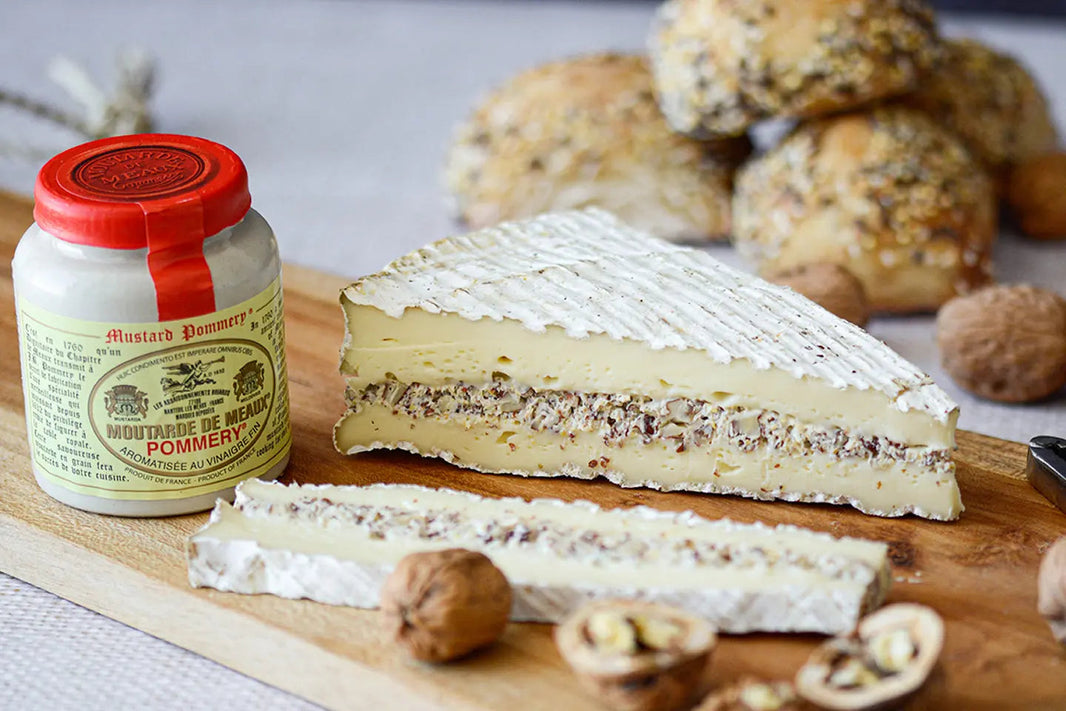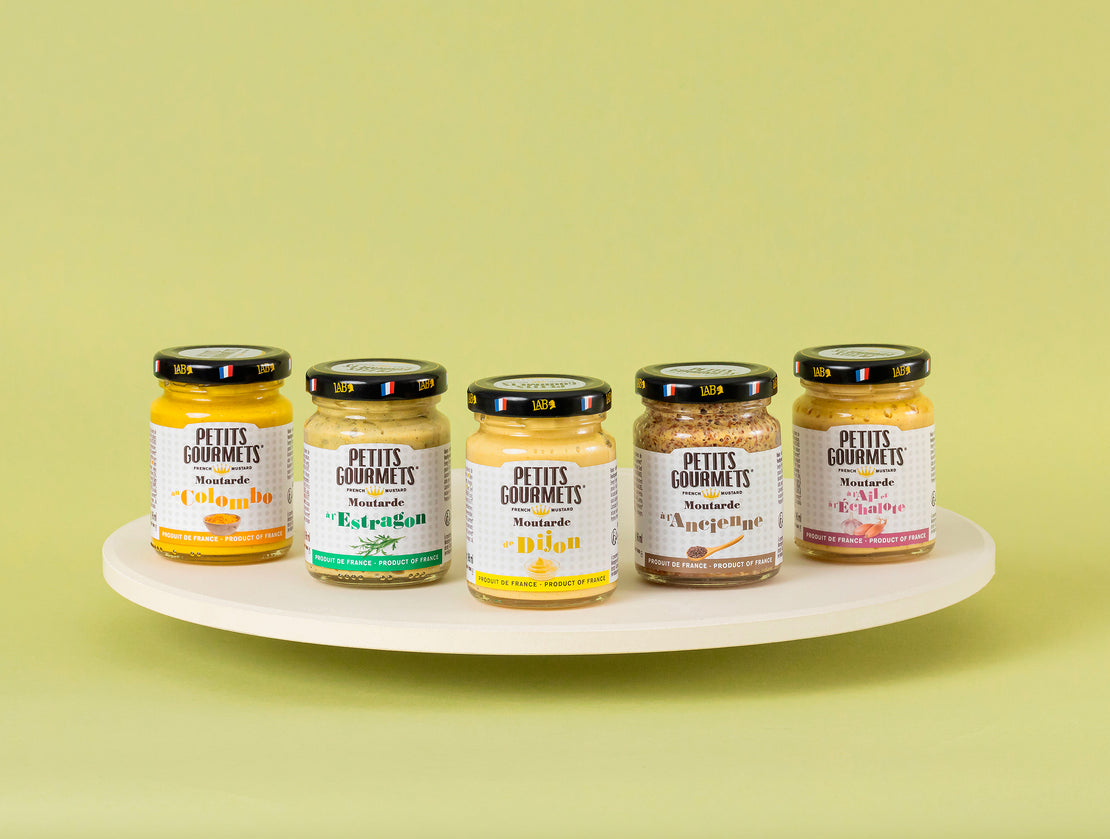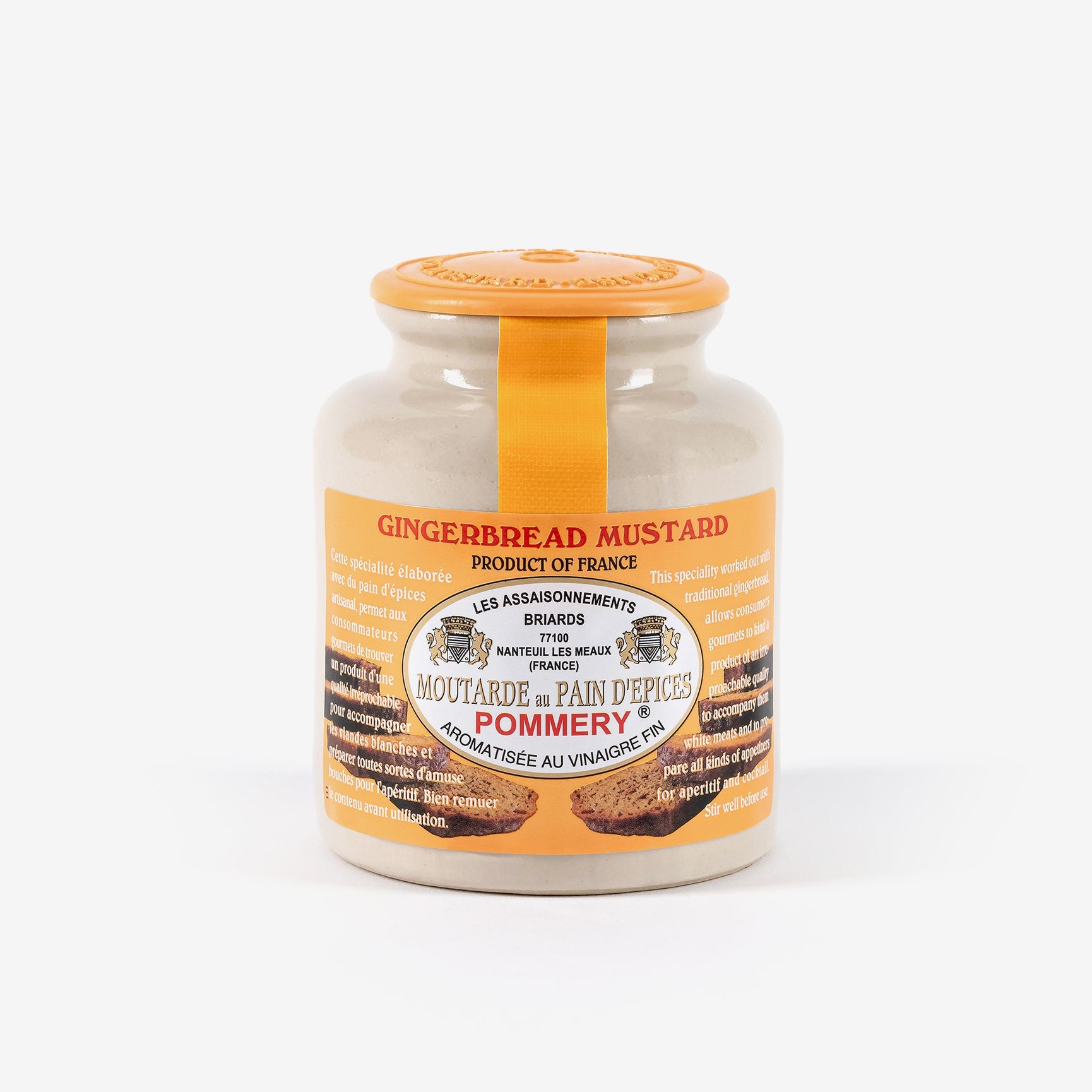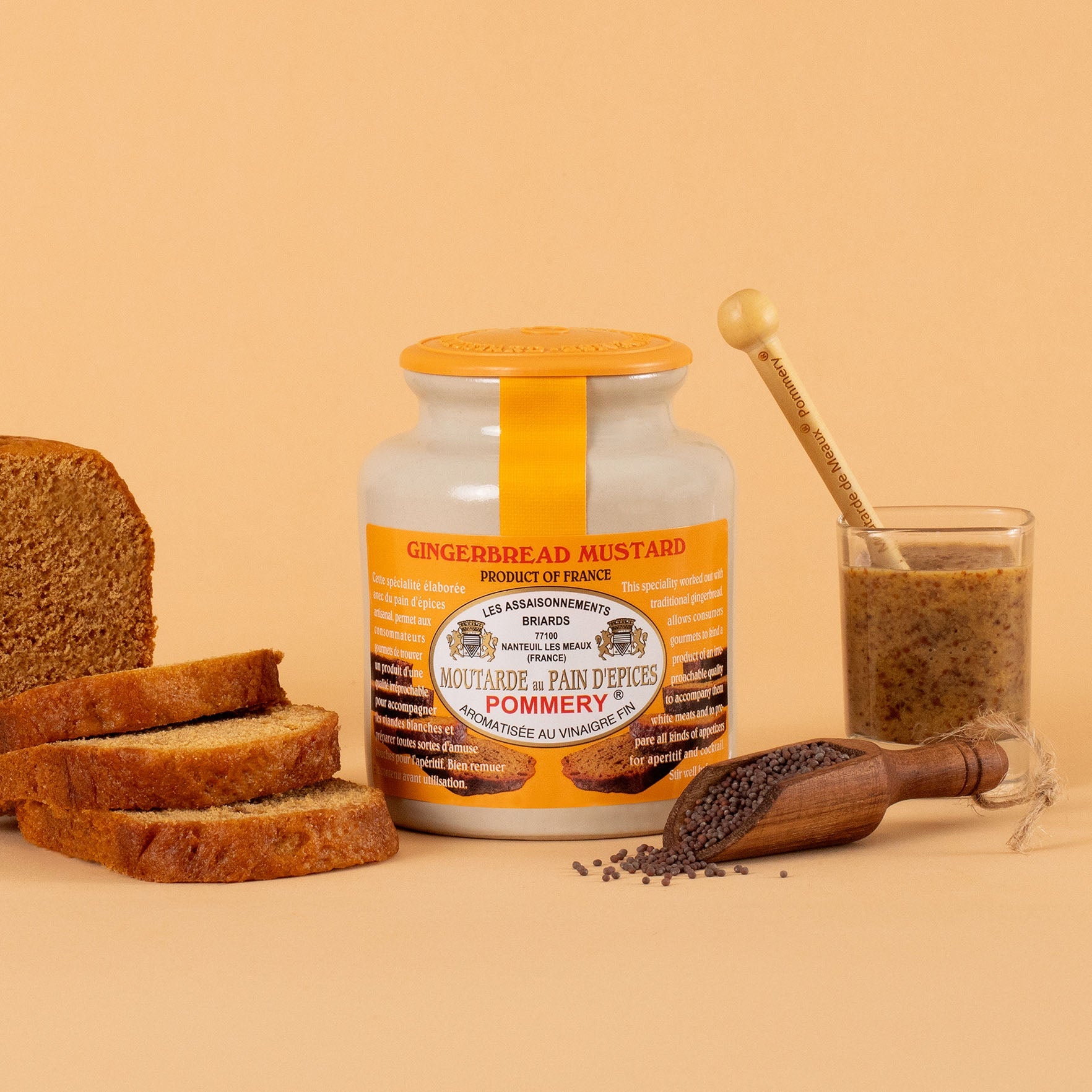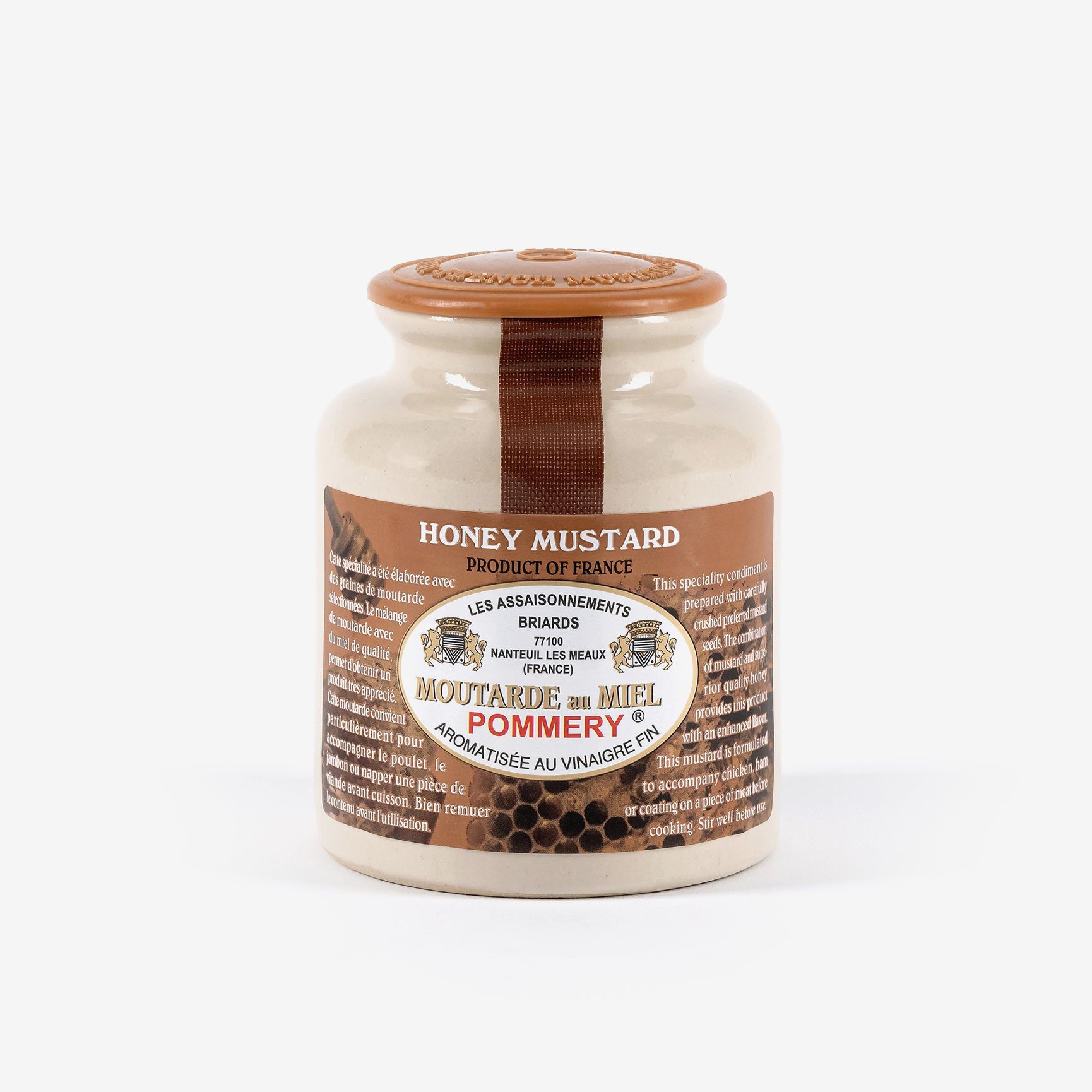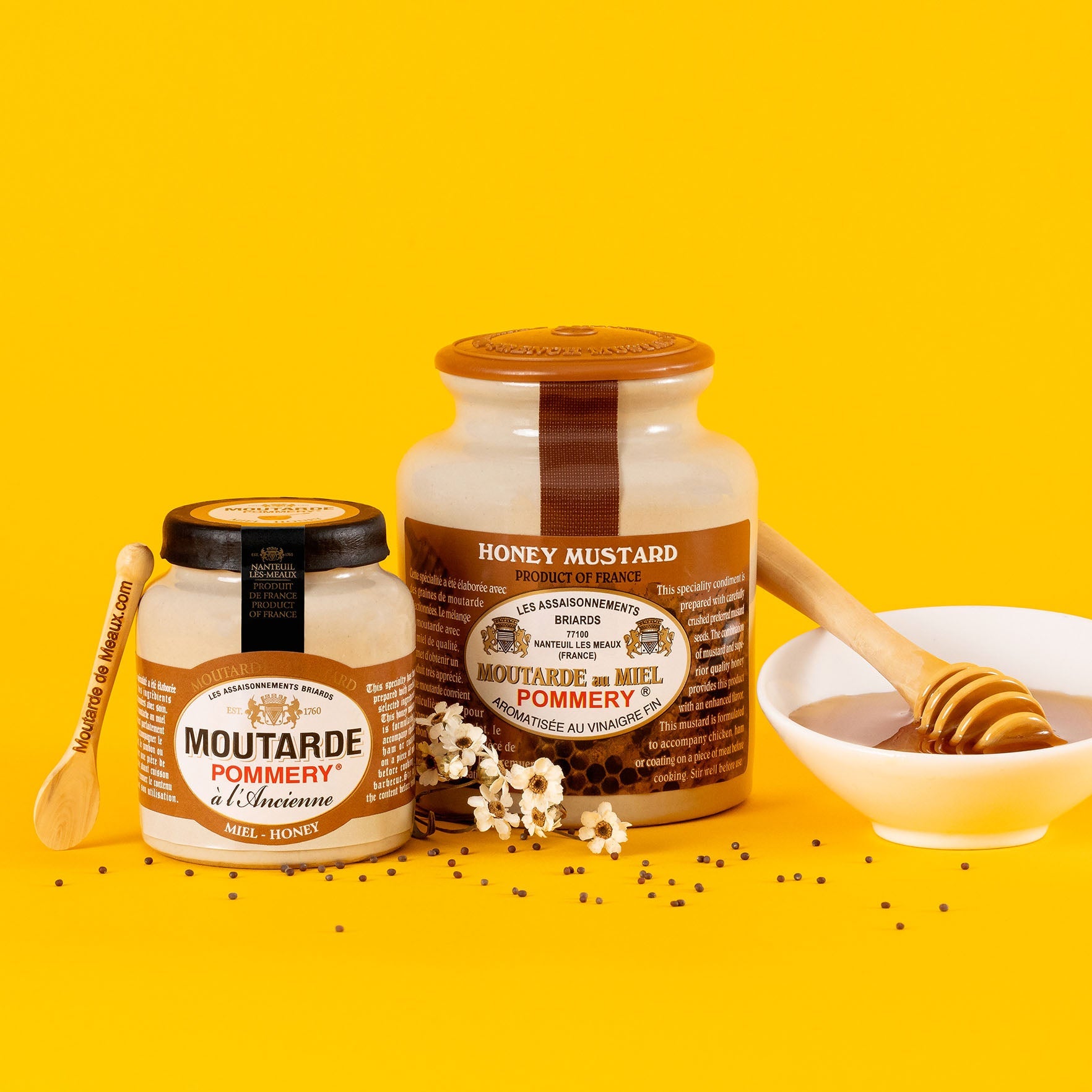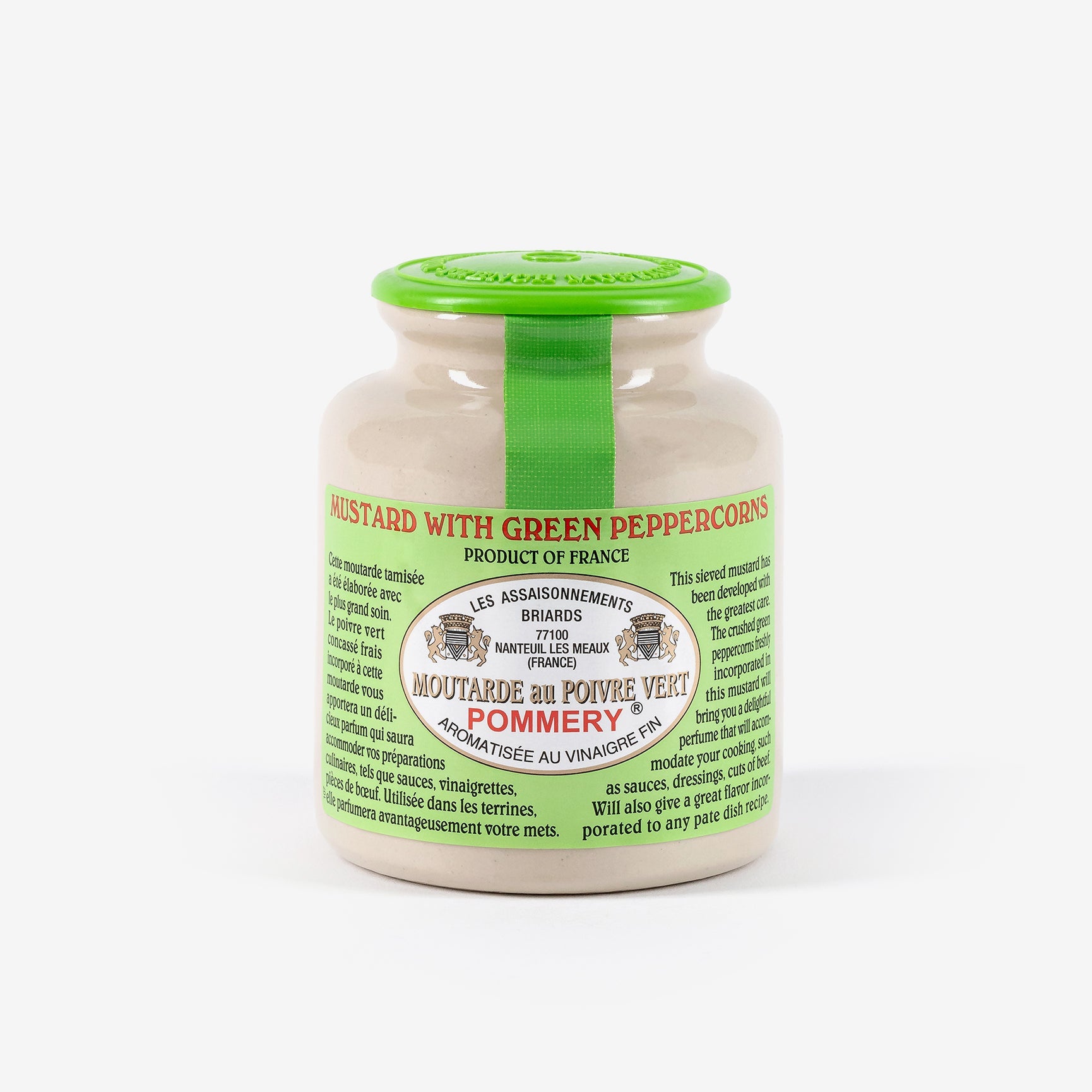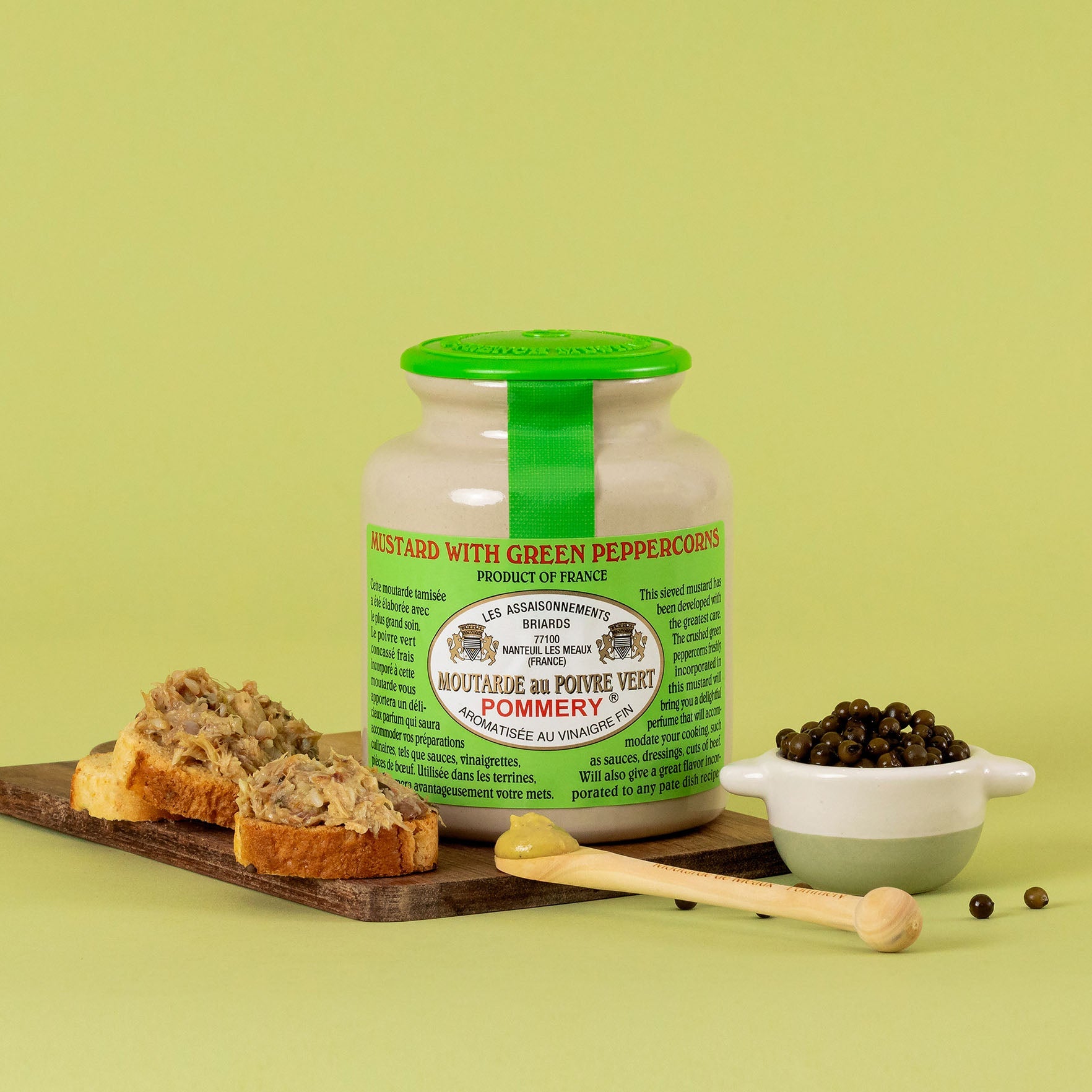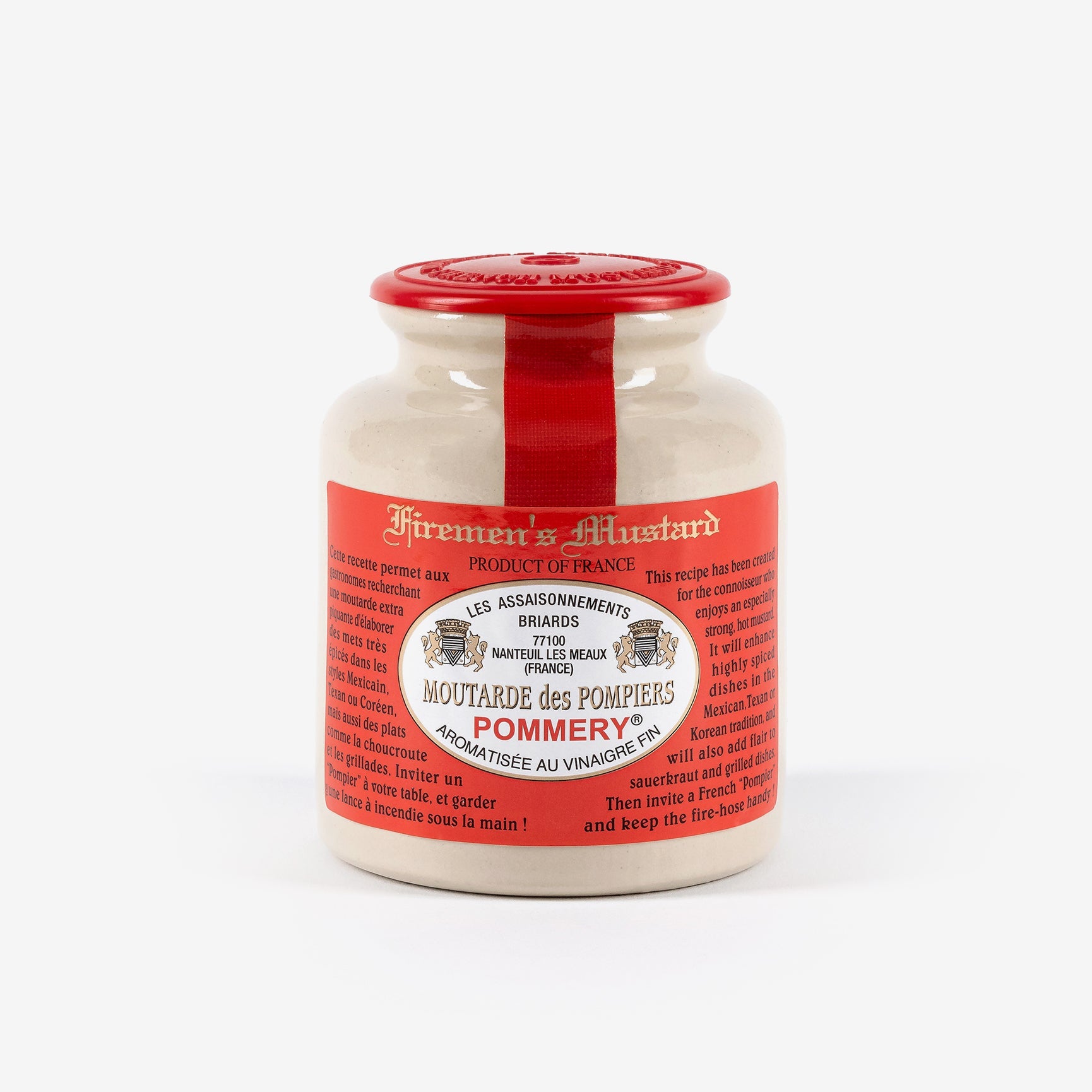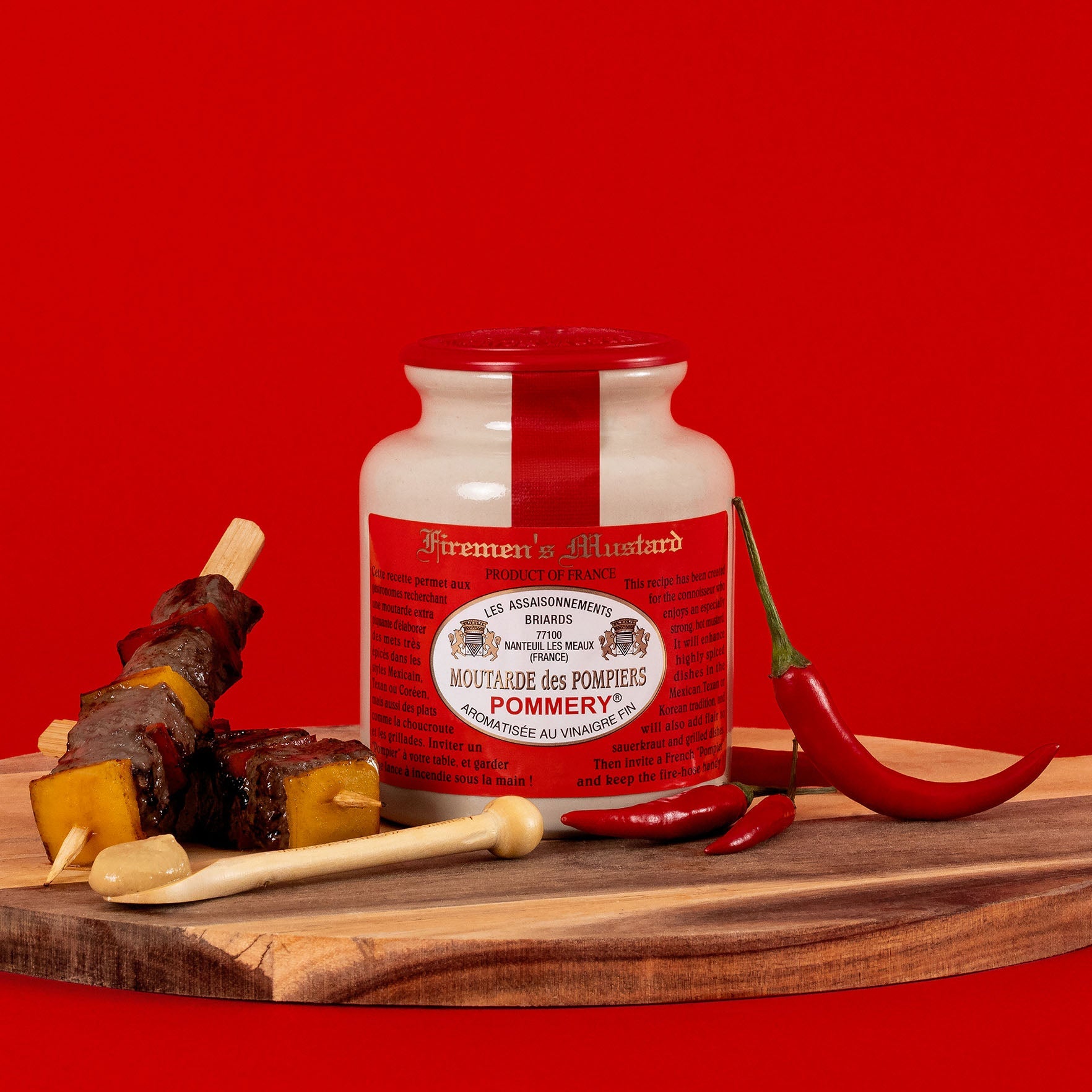Mustard, this millenary condiment that has become an essential part of French cuisine, comes in different forms that delight our palates. Among them, two versions stand out particularly: the sifted mustard, recognizable by its smooth and homogeneous texture, and the old mustard, characterized by its apparent seeds. These two preparations, although they share the same base, offer distinct taste experiences and invite each other into our plates in various ways. Each has its own characteristics, strengths and specific uses.
The sifted mustard
Manufacturing process
The sifted mustard follows a meticulous manufacturing process that gives it its characteristic texture. The mustard seeds, mainly brown or black varieties, are first finely ground to a powder. This powder is then mixed with vinegar, white wine, water and various spices according to the recipes. The crucial step of sieving then occurs: the resulting paste passes through very fine sieves that retain any coarse particles, guaranteeing a perfectly smooth texture. This modern industrial process allows product standardization and optimal conservation.
Features
Sifted mustard is distinguished by several aspects:
- Its texture: particularly smooth and creamy, it has a homogeneous consistency without any grain, which facilitates its incorporation in sauces and marinades.
- Its aromatic strength: the complete grinding of the seeds releases more pungent compounds, in particular allyl isothiocyanate, responsible for the characteristic spiciness. This fine grind allows a more immediate and intense expression of flavors.
- Visual appearance: bright yellow to light beige color is uniform, with no visible seeds. This careful presentation makes it a particularly popular condiment in restaurants.
- Its versatility: thanks to its smooth texture, it goes perfectly with many preparations, from vinaigrettes to hot sauces and marinades.
Old-fashioned mustard
Traditional method of preparation
Heir to centuries-old know-how, the traditional mustard is distinguished by its more rustic manufacturing process. Mustard seeds are coarsely crushed rather than ground into fine powder. This method preserves the integrity of a part of the seeds that remains partially whole. The mixture is then made with vinegar, white wine and various spices. The maceration that follows allows the flavors to develop fully, while maintaining the characteristic grainy texture.
Specifics
Old-fashioned mustard has several distinctive features:
- A unique texture: the partially crushed seeds create a granular mustard that "crunches" under the tooth, offering a special taste experience. This texture also provides a recognizable visual appearance.
- A complex flavour profile: the fact that the seeds are not completely crushed leads to a more gradual release of flavours. The piquant is often more moderate than in the tapered version, but the aromas develop longer in the mouth.
- A culinary versatility: particularly appreciated in preparations where its texture brings an extra dimension, such as meat sauces, rustic dressings or marinades. It also finds its place in traditional recipes such as rabbit with mustard. Discover the collection of ancient mustards Pommery®.
This variety has been gaining interest in recent years, driven by the return to authentic and traditional products. Consumers appreciate its artisanal and more distinctive character, which makes it a condiment of choice for food lovers.
Comparison and uses
Culinary applications
Both types of mustard have specific applications in cooking. Sifted mustard excels in preparations requiring a smooth texture: emulsified sauces, light vinaigrettes, homogeneous marinades. It blends perfectly into mayonnaises and other cold sauces. The old-fashioned mustard, on the other hand, shines particularly in simmering dishes, rustic sauces for grilled meats, and textured vinaigrettes. It brings a visual side and an additional taste dimension to the dishes.
Practical aspects and preferences
From a practical point of view:
Sifted mustard offers superior ease of use and dosing, especially for precise preparations. The old-fashioned mustard sometimes requires an adjustment of quantities due to its more irregular texture. Conservation is generally similar for both varieties, although the sieved version is less prone to separation. Discover the Pommery® collection of mustards.
Current trends:
Sifted mustard remains the preferred choice for daily use. The old-fashioned mustard is gaining popularity among gourmets and in upscale restaurants. Many consumers now opt for both versions, using them according to the recipes.
Far from opposing each other, these two varieties of mustard complement each other harmoniously in the modern kitchen. If the sifted mustard remains the reference for its versatility and ease of use, the old-fashioned mustard brings a touch of authenticity and a taste complexity appreciated by connoisseurs. This diversity enriches our culinary heritage and offers cooks, amateurs and professionals, a wider range of taste expressions.




